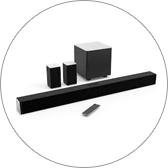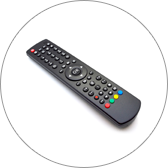HDMI 2.0 Features
HDMI Versions
| HDMI Version | 1.0 | 1.1 | 1.2 | 1.3 | 1.4 | 2.0 |
| Date initially releases | 12/9/02 | 5/20/04 | 8/22/05 | 6/22/06 | 6/5/09 | 9/4/13 |
| Maximum Bandwidth (Gbps) | 4.95 | 4.95 | 4.95 | 10.2 | 10.2 | 18 |
| Maximum Resolution | 1600x1200p60 | 1600x1200p60 | 1600x1200p60 | 2048x1536p75 | 4096x2160p24 | 4096x2160p60 |
| Maximum LPCM Audio Channels | 8 Channels | 8 Channels | 8 Channels | 8 Channels | 8 Channels | 32 Channels |
| Maximum Audio Sampling Rate | 768kHz | 768kHz | 768kHz | 768kHz | 768kHz | 1536kHz |
HDMI 2.0 Summary

- Bandwidth up to 18Gbps
- Transfer of High Dynamic Range (HDR)
- 4K @ 50/60 (2160p) resolution that is four times as high as 1080P
- Up to 32 audio channels for a multi-dimensional audio experience
- A sampling frequency up to 1536kHz
- Simultaneous transmission of video signals from two different users on the same screen
- Simultaneous transmission of multi-stream audio to up to four different users
- Support for the aspect ratio used in Cinema 21: 9
- Dynamic synchronization of video and audio streams
- Supplementing the CEC specification, so that more devices can be controlled via a single transmission point
HDMI 2.0 FAQs
Q: What are the 4K formats supported by HDMI 2.0?
A:
BOLD text is new with HDMI 2.0
| 8bit | 10bit | 12bit | 16bit | |
| 4K@24 | RGB 4:4:4 |
RGB 4:4:4 |
RGB 4:4:4 4:2:2 |
RGB 4:4:4 |
| 4K@25 | ||||
| 4K@30 | ||||
| 4K@50 | RGB 4:4:4 4:2:0 |
4:2:0 | 4:2:2 4:2:0 |
4:2:0 |
| 4K@60 |
BOLD text is new with HDMI 2.0
Q: Can existing HDMI cables support the higher bandwidths of HDMI 2.0 Specification?
A: Yes, existing High Speed HDMI Cables (wire only) will support the new higher bandwidths (up to 18Gbps). HDMI 2.0 specification defined a new, more efficient signaling method, for speeds above 1.4b limits (10.2Gbps), to allow higher bandwidths (up to 18Gbps) over existing High Speed HDMI Wire Cables.
Q: What is HDMI 2.0?
A: HDMI 2.0, which is backwards compatible with earlier versions of the HDMI specification, significantly increases bandwidth up to 18Gbps and adds key enhancements to support market requirements for enhancing the consumer video and audio experience.
Q: Is HDMI 2.0 backwards compatible with HDMI 1.x?
A: Yes, all HDMI versions are fully backward compatible with all previous versions.
Q: Does HDMI 2.0 require new connectors?
A: No, HDMI 2.0 uses the existing connectors.
Q: Does HDMI 2.0 require new cables?
A: No, HDMI 2.0 features such as 4K@50/60 (2160p) video formats will work with existing HDMI 1.4 category 2 cables, but not at longer lengths depending on the gauge and construction of the cable. It may also be necessary for a cable to use an active chip in thinner gauge cables or longer length cables so check the specifications closely.







